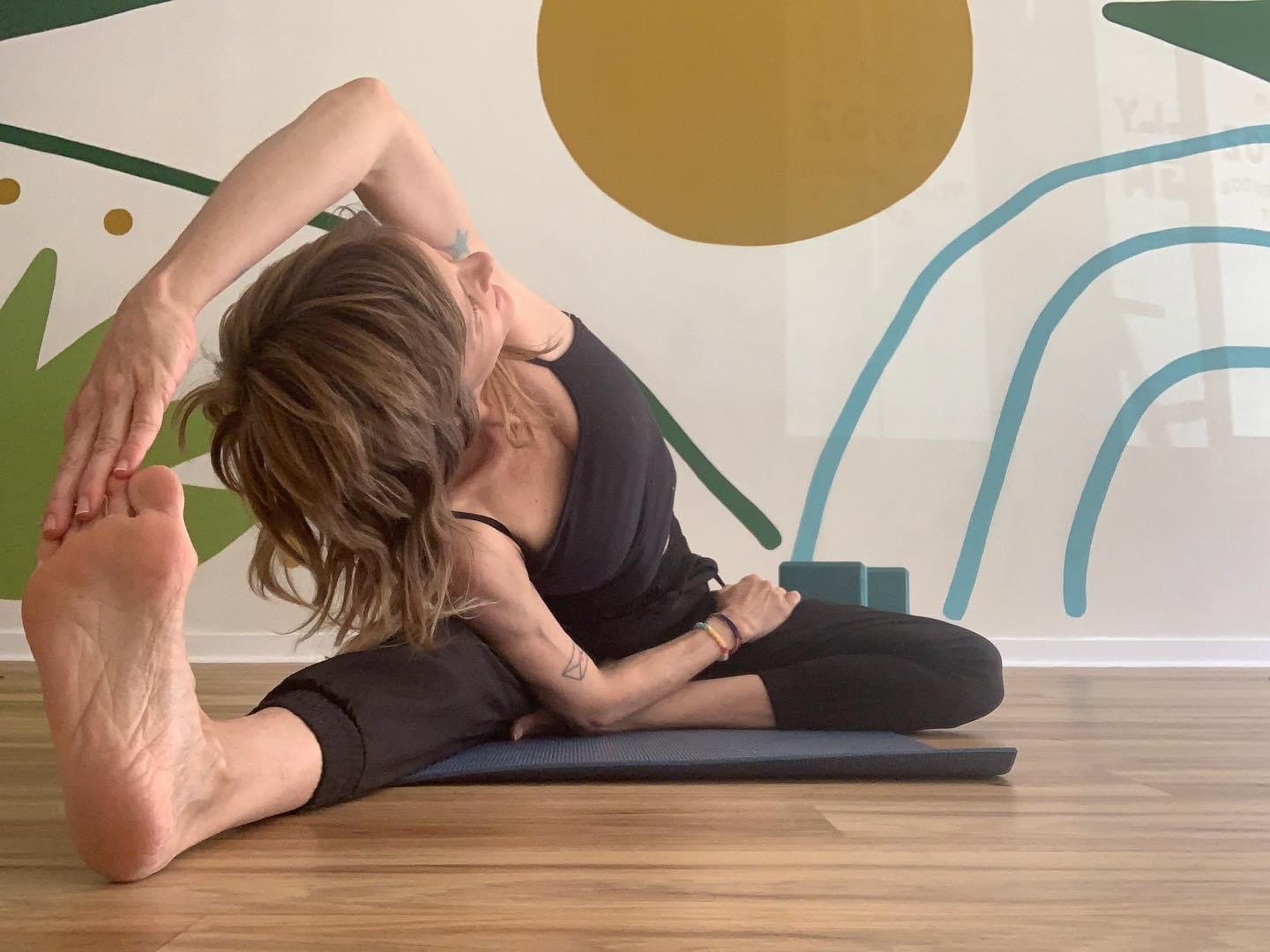Yoga for Pelvic Floor Health
Written by Afton Carraway
It may come as a surprise, but one of the most powerful tools for supporting pelvic floor health is something you’re already doing—breathing.
Breathing is something we do automatically—thankfully—but it’s also something we can control. We can slow it down, deepen it, or hold it at will. The same goes for the pelvic floor. These muscles usually do their job behind the scenes, but we can learn to engage or relax them on purpose.
The trouble starts when things like trauma, stress, or poor movement habits throw off the natural connection between the breath and the pelvic floor. That’s when dysfunction can creep in. Maybe the muscles are stuck in a holding pattern (always “on”) or they’ve gone completely offline (hard to activate). Either way, reconnecting with the pelvic floor starts with reconnecting to the breath, helping to restore the body’s natural rhythm and balance.
While "just breathe" can sound overly simplistic - especially if you’re navigating discomfort or frustrating symptoms from pelvic floor dysfunction (PFD), intentional breathing plays a vital role in regulating how the body moves and responds. It’s less about doing something new and more about remembering how your body was designed to work. This is one reason why yoga is such a helpful tool for pelvic floor health. Yogasana (the physical practice of yoga) supports both mobility and stability, helping the body return to a more functional state. For instance: a more mobile ribcage supports better breathing; stronger hips and legs provide more pelvic support, easing unnecessary strain on the pelvic floor.
And here’s an important point: You don’t have to do a bunch of pelvic floor exercises (kegels, anyone?) to actually support your pelvic floor. Because the pelvic floor responds to how we move and what we ask of it, working with your whole body is working with your pelvic floor.
Finally, we mustn't overlook the role of the nervous system. It plays an important role in how our muscles tense or release, how we breathe, and how we feel in our bodies. If you’re holding onto emotional stress—or if your nervous system is always in “work” mode—it can absolutely affect your pelvic floor. That’s why addressing mindset and emotional well-being is just as important as physical movement.
Yoga offers a whole-person approach, integrating mind, breath, and body. For those experiencing PFD, this kind of full-spectrum support can be deeply effective—restoring not just function, but a sense of connection and ease throughout the entire body. And for those of you NOT experiencing PFD, the whole-person approach of yoga can be a great way to stay balanced and connected deep from within, while, of course, also warding off future bouts with your pelvic floor health.
See ya’ll on the mat!
-Af


